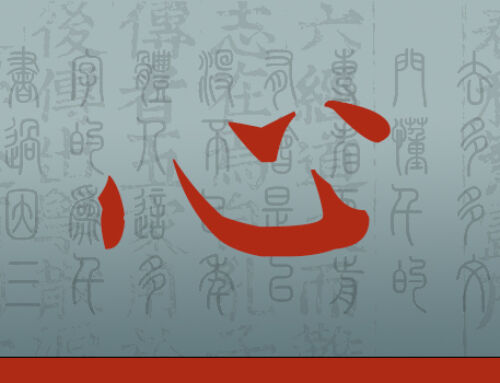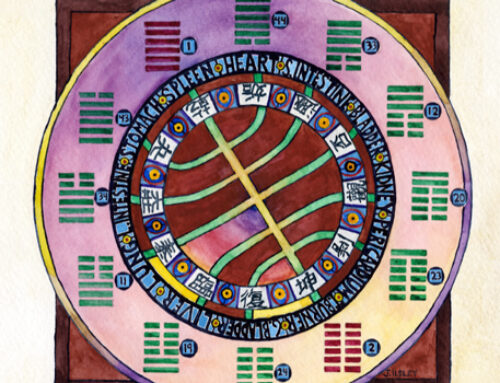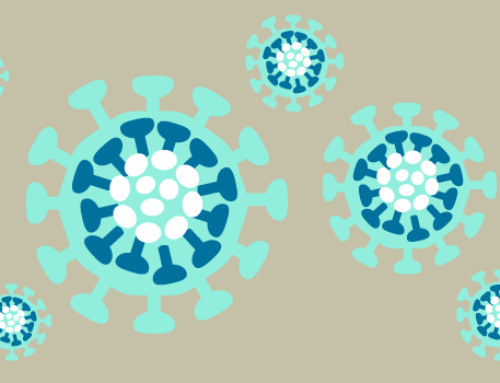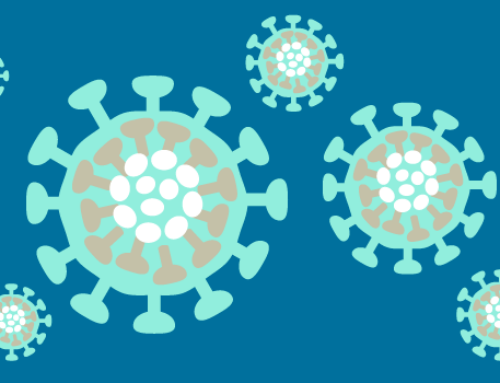By Various Authors
Introduced and Translated by Heiner Fruehauf
National University of Natural Medicine, College of Classical Chinese Medicine
Introduction
Traditional Chinese medicine incorporates several diagnostic systems of differentiation, such as the five organ approach, the six confirmation approach, and the triple warmer approach. These different diagnostic systems are frequently combined in clinical practice, but since they were conceived and favored by different schools of medical practitioners, they are often used completely independent from each other.
The eight diagnostic parameters, also called the eight principal patterns in diagnosis or the eight rubrics, constitute the most fundamental set of diagnostic standards which all practitioners of Chinese medicine—independent of their preference for one system of diagnosis or another—use and must know. The eight parameters constitute the basic diagnostic grid that is applied to a condition before any further differentiations according to organ networks, confirmations, etc., are made.
The parameters themselves are the result of historical discussion. Although used in an unorganized fashion since the creation of the Neijing, 2,000 years ago, they were synthesized and elevated to the status of diagnostic standard only during the early 1700s.
The following are translations from both the original text that first outlined the eight parameters in its present form, namely Chen Guopeng’s Yixue xinwu (Medical Illuminations), and Zhang Jingyue’s pioneering synthesis of “Yin and Yang” and the “Six Pathological Conditions” in Jingyue quanshu (Jingyue’s Collected Writings) which was created a century earlier. Both men are remembered as multi-talented educators—Daoists, philosophers, physicians, and highly productive writers who brought the understanding and clinical usage of the medical classics to a modern level.
![]()
The Six Pathological Conditions are External, Internal, Cold, Heat, Deficiency, and Excess. They are the vital pivot of medicine, and if we understand these six, each one of the myriad diseases can be mastered.
A disease is called EXTERNAL if Wind, Cold, Summer Heat, Dampness, Fire, or Dryness have been contracted from an external source. It can be called INTERNAL if the interior of the body system has been harmed by either the Seven Emotions, exhaustion and greed, or food and drink.
COLD is a Yin syndrome that manifests as either internal cold or external cold. In most cases, cold indicates deficiency. HEAT is a Yang syndrome that manifests as either internal heat or external heat. In most cases, heat indicates excess.
DEFICIENCY means that the patient does not have enough Righteous Qi (zheng qi), and in most cases where the disease goes from the inside out there is deficiency. EXCESS means that there is an overabundance of noxious Qi, and in most cases where the disease goes from outside in there is excess.
From Zhang Jingyue, Jingyue’s Collected Writings (Jingyue quanshu): “Differentiating the Six Pathological Conditions”, 1637
![]()
Every disease can be described by a general grid of parameters, namely Cold and Heat, Deficiency and Excess, Interior and Exterior, Yin and Yang–only these eight, not more! There is not a single symptom complex that exceeds the scope of these principal patterns. The task of diagnostic differentiation, therefore, also does not go beyond this framework.
COLD and HEAT can be sufficiently differentiated by observing whether there is thirst or no thirst; whether there is thirst with a desire to drink or thirst with no desire to drink; whether there is a preference for cold food and drink or a preference for hot food and drink; whether there is restlessness or cold limbs; whether there is much or little urine and dark or white urine; whether there is constipation or diarrhea; and whether there is a slow or a rapid pulse.
If a patient is thirsty and likes to drink large amounts of water, desires cold food and drink, exhibits symptoms of restlessness, reports dark and scanty urine, is constipated, and has a rapid pulse, then that can be classified as Heat.
If someone is not thirsty, or is thirsty but has no desire to drink, complains about cold hands and feet, reports clear and profuse urine and/or diarrhea, and has a slow pulse, then that can be classified as Cold.
DEFICIENCY and EXCESS can be sufficiently differentiated by observing whether there is sweat or no sweat; whether there is distention and/or pain in the chest and abdomen; whether the distention is of an intermittent nature or not; whether the pain, if there is any, increases when the afflicted area is pressed or not; whether the disease is of an acute or chronic nature; whether the patient has a strong or a weak constitution; and whether the pulse appears to be weak or strong.
If there is no sweat, unrelenting abdominal distention, pain that increases when pressed, a newly developed problem, a strong constitution, and a forceful pulse, then that can be classified as Excess.
If there is lots of sweat, symptoms of abdominal distention that come and go, pain which gets better or even stops when pressed, a chronic condition, a weak constitution, and a weak pulse, then that can be classified as Deficiency.
EXTERIOR and INTERIOR can be sufficiently differentiated by observing whether there is fever or tidal fever; whether there is aversion to cold or aversion to heat; whether patients suffer from headache or abdominal pain; whether there is a stuffy nose or a dry mouth; whether there is a tongue coating or no tongue coating; and whether the pulse is floating or deep.
If we find a fever with aversion to cold, a headache with stuffy nose, no tongue coat, a floating pulse, then that can be classified as Exterior.
If we find spontaneous heat flashes or tidal fever and a general aversion to heat, abdominal pain and a dry mouth, a yellow or black tongue coating, a deep pulse, then that can be classified as Interior.
The category of YIN and YANG is much broader in scope than the other six, and subsumes all these previous patterns under two major categories: Heat is Yang, excess is Yang, exterior is Yang; Cold is Yin, Deficiency is Yin, Interior is Yin.
If noxious cold invades the exterior of the body, then this is Yin within Yang. If heat makes its way into the interior, then this is Yang within Yin. If cold enters the interior, then this is Yin within Yin. If noxious heat reaches the exterior of the body, then this is Yang within Yang.
The Healthy or True Yin (zhen yin) and the Healthy or True Yang (zhen yang) are another matter altogether. If the pulse is rapid and weak and deficiency fire flares up periodically, and if there are symptoms of dry mouth and parched lips, internal heat and constipation, and indications of reversed Qi flow, then that is a deficiency of True Yin.
If the pulse is big but forceless, and if there are symptoms of weakness in the extremities, colorless lips and only little taste sensation in the mouth, cold flesh and diarrhea, and indications of undigested food, then this is a deficiency of True Yang.
In sum, the differentiation between Cold and Heat, Excess and Deficiency, Exterior and Interior, Yin and Yang does not go beyond these general guidelines. There are, however, cases where a patient exhibits heat symptoms but likes to drink hot fluids. This phenomenon can be explained by the principle of similar energy patterns attracting each other. And there are patients with a general cold syndrome who prefer cold fluids, which, however, they usually cannot drink down. These are cases of false heat.
There also are patients with a general heat syndrome who suffer from diarrhea. This, then, is the more unusual type of diarrhea with heat involvement. Or the other way around, there are patients with a general cold syndrome suffering from constipation, which in this particular circumstance is referred to as Yin constipation.
There are heat syndrome patients complaining about cold hands and feet. The reason for this is the principle that intense heat can precipitate severe coldness, while the regular, more moderate feeling of coldness is caused by the constitutional condition of frail body fire. In other words, intense heat causes intense cold, and little heat causes little cold. There are, furthermore, cold syndrome patients who are restless and who like to sit or even lay in mud water, a condition referred to as Yin restlessness.
There are, moreover, heat syndrome patients with lots of sweat, which is simply an expression of noxious heat that has reached the interior. Or the other way round, there are deficiency syndrome patients who do not sweat at all, in which case the fluids have been completely depleted.
Finally, there are patients with internal symptom complex and aversion to cold, which can be classified as complete cold invasion. And there are patients with exterior symptom complex who are thirsty and express an aversion to heat, in which case we are dealing with a heat disease that has reached the exterior from inside.
These are the laws of the transformation of Yin and Yang, and thus the foundations of treating disease. To differentiate accordingly is every physician’s first task!
From Chen Guopeng, Yixue xinwu (Illuminating Medicine): “Cold and Heat, Deficiency and Excess, Exterior and Interior, Yin and Yang”, 1732
![]()
When diagnosing and treating disease, we must first of all differentiate between yin and yang. This is simply the most important principle of medicine. If the physician correctly differentiates yin and yang, the treatment will never be accompanied by side effects. All of the myriad ways of practicing medicine, therefore, can be summed up in two words: yin and yang, and that is all there is to it! There is a yin/yang of symptoms, there is a yin/yang of pulses, and there is a yin/yang of herbs.
When it comes to symptoms, surface disorders are yang, internal disorders are yin; heat symptoms are yang, cold symptoms are yin; symptoms in the upper part of the body are yang, symptoms in the lower part of the body are yin; qi related symptoms are yang, blood related symptoms are yin; moving symptoms are yang, stationary symptoms are yin; talking a lot is a yang symptom, being passive and silent is a yin symptom; seeking the light is a yang symptom, seeking the dark is a yin symptom; having trouble exhaling is a sign of weak yang, having trouble inhaling is a sign of weak yin; patients afflicted by a yang disease have trouble bending downward, while patients afflicted by a yin disease have trouble bending upward.
When it comes to pulses, the floating, big, slippery, and rapid types of pulse can all be categorized as yang, while the sunken, minute, fine, choppy types of pulse can be categorized as yin.
When it comes to medicinal substances, the drugs with a rising and dispersing effect are yang, and the ones with an accumulating and descending effect are yin; pungent and hot drugs are yang, bitter and cold drugs are yin; drugs affecting the qi are yang, drugs affecting the blood are yin; drugs that are moving in nature and work all over the body are yang, and drugs that are static in nature and only work in one particular place are yin. These are the main principles of practicing medicine.
As physicians, furthermore, we must be able to recognize secondary yang symptoms within a general yin condition, and secondary yin symptoms within a general yang condition. If we do not master this more finely tuned level of differentiation, problems will arise immediately. Albeit its importance, this more subtle level of differential diagnosis also does not go beyond the general framework of yin and yang that I just outlined. However, we should be aware that the various interactions that may potentially occur between these two types of qi—a simple yin and a simple yang—can turn the above short-list of symptoms and pulses and medicinal substances into a complicated lot. On the other hand, if all of these symptoms are assessed by the synthesizing eye of a well-informed physician, the source condition that underlies the maze of surface phenomena will naturally become transparent.
To illustrate my words with an example: if there already is a surplus of yang energy in the body and we apply a treatment that is aimed at adding (more) yang, then (pathological) yang will flare up even more and eventually scorch and dry out the already scarce yin resources of the body. In the same sense, if yang happens to be deficient and we approach the condition with a yin type of treatment, then (pathological) yin will surge dangerously and diminish yang as a result. However mysterious the workings of medicine may seem, therefore, it can be said that once you master this crucial principle of yin and yang you are already half way there.
The Dao begot the principles of yin and yang, and thereby created the “two” which were originally united in “one.” Fire is the master of water, water is the source of fire, but originally they were not separate entities but united in one.
How should we understand this? Water is yin, fire is yang, and their structural manifestations are ice and ashes. How come these two opposite forces are said to originate from the same source? One could say that the nature of fire is hot, thereby causing an absence of water within fire. When heat has burned out, on the other hand, then this is an indication that yin is gone and that all living things will become dry and brittle. The nature of water is cold, thus causing the absence of fire within water. When cold comes to an end, however, then this is an indication that yang is dead, and every life form on earth will become still and disappear. So when we look at the relationship between yin and yang, can we really claim that the qi of water and fire is separating with every breath?
Within the context of the human body, “water” and “fire” qi are the original yin (yuan yin) and the original yang (yuan yang), and together they produce the so called prenatal original qi (yuan qi).
Whenever we seek to understand the prenatal, we have to ponder the roots. It is the gate of life (mingmen), the orifice where we receive the spark of life, that is the seat of the body’s original fire and water and thus the palace of the prenatal. If we disregard this fact and look for the truth elsewhere, then this would be like looking for water on the ocean. Serious scholars of medicine must never neglect this fact.
When we apply the concept of yin and yang to the human body, we usually refer to qi and blood, the zang organs and the fu organs, or heat and cold. All of these denominations refer to the postnatal, that is the structural aspect of yin and yang. In terms of the prenatal yin and yang, yang is called the original yang, yin is called the original yin. Original Yang, that is immaterial Fire, promotes birth and transformation; it is what makes life’s metabolism possible, determines longevity (ming) and spirituality (xing), and thus it is called the Original Qi. Original Yin, that is immaterial Water, promotes growth and maturity; it is the substance of sexual fertility (tiangui), it determines weak and strong, and thus is called Original Jing. Original Jing and Original Qi–together they compose the Original Shen (yuan shen) which is in charge of the transformation of material Jing into material Qi and vice versa, the basic process that breathes life into our bodies. Our life force corresponds to nature, where everything relies on this basic process.
The Neijing says: “The one who apprehends Shen prospers, the one who loses Shen dies.” That is exactly what I was just talking about. Most of our contemporaries harm their pre-natal endowment through post-natal exertion and desire, just as today’s doctors only understand structural noxious Qi and do not understand the immaterial Original Qi. Everything structural is a trace, its stages of splendor and decline are out in the open for everyone to see, and to read the structural body is not difficult at all. The Immaterial is Shen, entailed in magical transformation that is not subjected to the laws of structure, and thus is more difficult to restore. Thus the Classic (Neijing) states: “The unsophisticated doctor holds on to structure, while the sophisticated doctor grasps Shen.” Alas! Another enlightened voice who understands the brightness of Shen and alerts us to the Immaterial that is behind the images of our structural world!
From Zhang Jingyue, Jingyue’s Collected Writings (Jingyue quanshu): “Yin and Yang”, 1637
![]()
All Translations © 2008 Heiner Fruehauf









Thanks for this information. At University of Westminster we are trying as much as possible to embed the historical context of Chinese medicine into the curriculum and this adds another aspect of this so I have added the web link to students lecture notes. It is also useful for students to read more widely and in looking at this article and seeing what is on the website they start to see the broader picture.
2rd Year student at ICOM East Grinstead. I can see that one has to be very careful not to jump to conclusions too quickly throughout one’s practicing life!